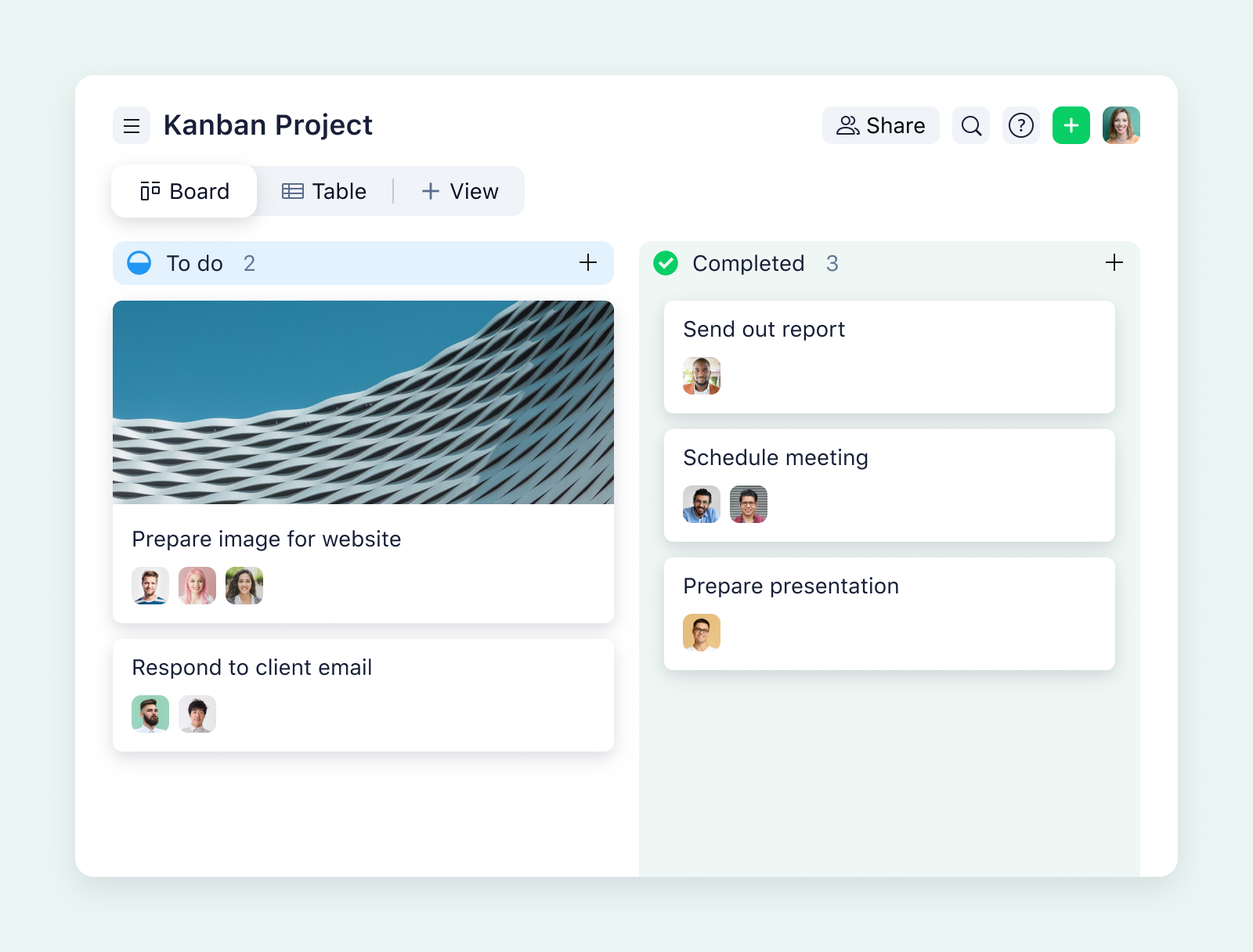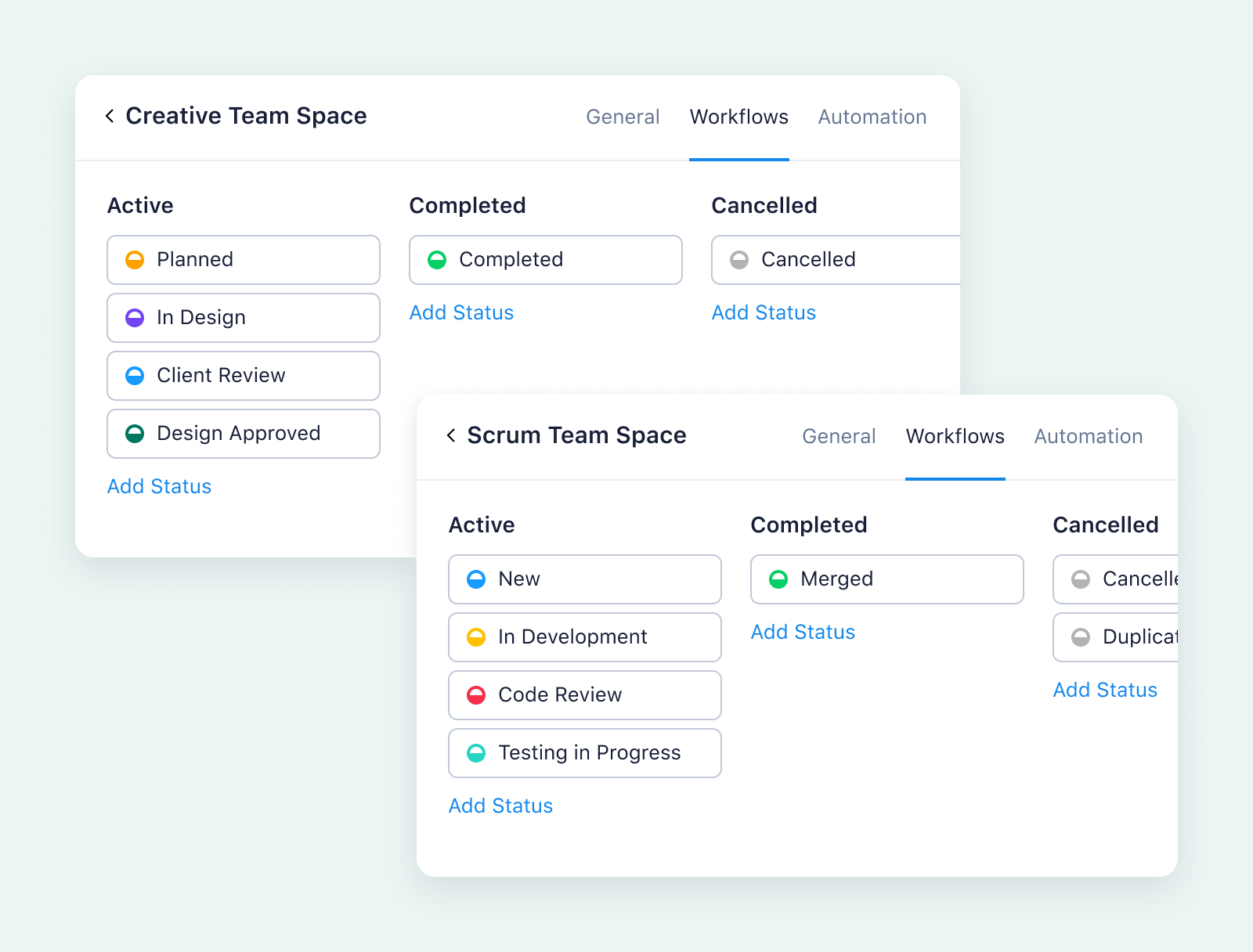Starting a new project at work can be overwhelming, especially when figuring out the best way to organize and manage it. While having a detailed project plan is essential for outlining tasks and deadlines, choosing the right approach for the way you execute the project is equally important.
Luckily, there are lots of tried-and-tested approaches to project management out there for you to choose from. Formally, these are called project management methodologies.
A project management methodology provides a structured framework for effectively managing and adapting to changes throughout the project lifecycle. Common project management methodologies include Agile, Waterfall, critical path method (CPM), and Six Sigma.
Agile methodologies are some of the most popular approaches to project management — if you’re wondering why, the clue is in the name. Agile methodologies allow project managers to be nimble and flexible, adapt to challenges as they arise, and pivot quickly to the most successful way of working.
There’s a lot to understand about Agile project management to use it effectively in your organization. In this piece, we’ll cover what Agile is, introduce its fundamental Agile values and principles, and show some different Agile frameworks.
We’ll also show you how to incorporate the principles of Agile into your next project with Wrike, our versatile work management software.
What is Agile project management?
Simply put, Agile project management is a way of approaching project management that uses Agile values and principles to pave the way for project success. Agile uses a set of four values and 12 principles to guide project managers in their work.
These Agile values and principles were first developed and set out in a charter known as the Agile manifesto, which was written in 2001 at a gathering of developers and programming professionals in Snowbird, Utah. It was created to find a solution to older project management methodologies and processes that were seen as unworkable for modern projects.
The Agile manifesto had 17 signatories, including Kent Beck, Alistair Cockburn, Jim Highsmith, and Jeff Sutherland. All 17 went on to be known as the Agile Alliance. Once the manifesto was released, the alliance grew to eventually have more than 72,000 members worldwide, who all embrace Agile project management principles and values in their daily work.
But what are the core values and principles that make up the Agile methodology, exactly?
Let’s explore each of them in detail.
What are the 4 values of Agile?
Agile project management is driven by four core values that prioritize:
- Individuals and interactions over processes and tools
This is a cornerstone of Agile project management — favoring communication and interpersonal relationships over strict processes. Agile advises a more personalized approach to project management, where teams constantly communicate, rather than relying on more stagnant scheduled updates. - Working software over comprehensive documentation
Agile teams are not big fans of paperwork. They would rather use more flexible software solutions to manage their data, reports, and status updates than traditional documentation. - Customer collaboration over contract negotiation
Agile teams love collaboration, and that includes regularly updating and liaising with customers and stakeholders to get their input on how the project is progressing. Lengthy contracts with lots of revisions are part of the documentation that Agile teams prefer to move away from. - Responding to change over following a plan
Agile teams are responsive to change and thrive off adapting to new environments and challenges. This is the value that characterizes Agile project management methodology above all else.
These values inform every process and task completed under the Agile umbrella.
Now, let’s move on to the 12 principles of this manifesto, delving further into what makes this project management philosophy so unique.
What are the 12 principles of Agile?
Many of the Agile methodology principles were initially tailored for software engineering, reflecting the background of the original Agile Alliance members. However, these principles are highly adaptable and can be applied to projects across various industries. Here are the 12 principles of Agile project management and how they can be applied beyond software development:
- Our highest priority is to satisfy the customer through early and continuous delivery of valuable software.
Agile teams place customer satisfaction first and foremost. They prioritize delivering results at regular intervals, rather than have clients wait for one final reveal at the end of the process. - Welcome changing requirements, even late in development. Agile processes harness change for the customer’s competitive advantage.
Agile teams are ready and able to tackle changes, even at the last minute. Through continuous iteration, they adapt quickly, giving them an advantage over more traditional teams, who may not handle change management as easily. - Deliver working software frequently, from a couple of weeks to a couple of months, with a preference to the shorter timescale.
Agile teams are all about regular and consistent communication, rather than prescheduled updates that may be too far apart to be workable for customer needs. Deliverables are handed over in increments, allowing for continuous feedback and adjustments throughout the project. - Business people and developers must work together daily throughout the project. Collaboration is key in Agile, not just between team members, but with stakeholders, developers, customers, and other relevant parties.
- Build projects around motivated individuals. Give them the environment and support they need, and trust them to get the job done.
Agile teams are successful because they make sure to structure their team with the right people for the project. Cross-functional teams bring together a mix of perspectives and skills. Once your team members have the support, collaboration, and tools they need to succeed, the rest will follow. - The most efficient and effective method of conveying information to and within a development team is face-to-face conversation.
There is no substitute for face-to-face collaboration when it comes to project management. This principle remains vital, even in our evolving environment of hybrid and remote work setups. Zoom and Teams are great alternatives to phone calls and email, and teams can also make the effort to meet in person for key points of progression throughout the project. - Working software is the primary measure of progress.
This principle cites software as its main deliverable, but its message endures across industries. Your focus as a team should always be to deliver the best quality result to your customers as possible, ensuring a positive user experience. If they are satisfied, then that is the strongest indicator of your project’s success. - Agile processes promote sustainable development. The sponsors, developers, and users should be able to maintain a constant pace indefinitely.
This emphasizes the importance of balancing workload and resources to ensure long-term productivity. It’s about creating a workflow that avoids burnout and supports steady progress toward high-quality results. - Continuous attention to technical excellence and good design enhances agility.
Agile is not a “one and done” approach to project management. Every new project offers the opportunity for innovation and to create something new — not to keep rehashing the same ideas. - Simplicity — the art of maximizing the amount of work not done — is essential.
Agile teams do not get bogged down in overcomplication. They meet their requirements, do their jobs well, deliver the final product, and move on to the next project. - The best architectures, requirements, and designs emerge from self-organizing teams.
The best teams are those with a leader who is not afraid to let other team members shine. Micromanaging rarely makes any team better or more productive, and Agile teams are great examples of what can happen when this is not the case. - At regular intervals, the team reflects on how to become more effective, then tunes and adjusts it behavior accordingly.
Continuous improvement is the name of the game in Agile. Regular performance reviews of the team as a whole, supported by key metrics, can help identify and eliminate unproductive habits, paving the way for greater success.
Common Agile methodologies (the subcategories)
The Agile methodology includes a variety of subcategories under its umbrella. Each framework offers a slightly different approach to project management while maintaining the core Agile values and principles.
Here are some of the most widely used Agile methodologies:
Scrum
Scrum teams break their work into one to four week-long sprints. After each sprint, teams hold retrospectives to reflect on their work, discuss what went well, and pinpoint areas for improvement. This ensures that teams stay in sync and make steady progress.
Kanban
Kanban is an Agile approach that uses visual boards and cards to manage workflow. It helps teams stay organized and efficient by providing a clear view of tasks. A key feature of Kanban is limiting the number of tasks in progress at once, which keeps the focus on completing work and continuously improving work processes. Project management software like Wrike includes Kanban boards, making it easy to track progress, adapt to changes, and collaborate effectively in an Agile workflow.
Also read: Kanban software for everyone: 6 workflow visualization tools
Extreme programming (XP)
Extreme Programming (XP) improves software quality through practices like pair programming, test-driven development (TDD), and frequent releases. As part of Agile software development, it prioritizes customer feedback and flexibility to adapt to changing requirements.
Crystal
Crystal is an Agile methodology that adapts its practices based on the project’s size and complexity. It promotes frequent communication and collaboration so that the methods fit the specific needs of the project and support effective teamwork and project execution.
Lean
Lean Agile principles focus on maximizing value by eliminating waste and improving efficiency. This framework emphasizes delivering value quickly and continuously refining processes to boost productivity and reduce delays.
SAFe (Scaled Agile Framework)
SAFe is a comprehensive approach designed to apply Agile principles to large organizations. Scaled Agile Framework principles adapt Lean practices to manage complex projects and coordinate multiple teams effectively. Overall, SAFe Lean Agile principles help organizations deliver consistent value and adapt to evolving requirements.What kind of projects can be managed using Agile?
Although it was originally designed for software development processes and projects, Agile methodology has since been adapted for many different projects across a variety of sectors. Its inherent flexibility allows teams to adjust goals without jeopardizing project success.
Agile is ideal for teams that thrive on rapid progress and require less rigid structures and deadlines. If your project would benefit from consistent communication and a more adaptable approach, Agile practices might be the perfect fit. Here are several types of projects and teams where Agile methodology values can easily be applied:
- Product development: Agile is frequently used in product development to enable teams to rapidly iterate on design and functionality based on user feedback.
- Product management: In product management, Agile helps teams respond quickly to market changes and customer needs, ensuring that products stay relevant and competitive.
- Marketing campaigns: Agile can streamline marketing efforts by allowing teams to quickly adjust strategies based on campaign performance and market trends.
- Event planning: For event planning, Agile enables teams to adapt to changes and unexpected issues efficiently, so that all aspects of the event are executed smoothly.
- Research and development: In R&D projects, Agile supports iterative experimentation and feedback, allowing teams to explore new ideas and adjust their approaches based on findings and evolving goals.
How to implement Agile principles and values into your projects
You might feel ready to give Agile project management a shot, but still be uncertain about actually implementing the manifesto’s guidelines. Fortunately, there’s no one single way to apply Agile core values and principles into your projects. The Agile manifesto is an intuitive guide for your teams to make their own. As long as you keep to the fundamental ideas of Agile, you can adapt it to suit the needs of your project.
One way to ensure success is to use project management software that is compatible with the principles of Agile. Wrike is a collaborative work management tool that can aid your Agile team in project success with features like:
- One source of truth for reports, edits, and comments, with no unnecessary paperwork
- Automation of repetitive tasks and workflows, which streamlines processes and frees up time for more strategic work
- @mentions and app integrations, which ensure that all communication can be done in one place for quick and consistent updates
- Customizable request and intake forms, so that work can be clearly prioritized and you can make the most of every sprint
- Ready-to-use templates for your team, including Agile teamwork, sprint planning, Kanban projects, and more
Discover how Wrike can bring your team to Agile success. Start your free two-week trial now.
Note: If you want to read more about other approaches, check out:






